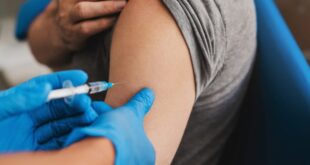The Spanish Society of Neurology continues its emphasis on the importance of research and also raises awareness of the growing prevalence of the condition.
Credit: Shutterstock
World Parkinson’s Day, 11th of April, is a day dedicated to raising awareness about Parkinson’s disease – a progressive neurological condition that affects movement and coordination.
The World Health Organization (WHO), in 1997, officially recognized this date as a tribute to James Parkinson. A British doctor, neurologist, paleontologist, and sociologist from 1817, Parkinson was the first person to identify the disease.
Parkinson’s Disease is the second commonest neurodegenerative disease among adults, behind Alzheimer’s. According to the Spanish Society of Neurology(SEN), around 200,000 people in Spain are living with this condition. Each year, around 10,000 new cases are diagnosed – and the number of people affected is expected to triple over the next 25 years.
SEN reported that over the past 20 years, the number of Parkinson’s-related deaths has more than doubled. Around 15% occur in those under 50.
It is not known how common childhood Parkinson’s is in Spain. According to the Vall d’Hebron University Hospital in Barcelona, global estimates put it at 0.8 cases for every 100,000 children.
In celebration of World Parkinson’s Day the Spanish Parkinson’s Federation released a video to highlight the stigma faced by people living with this condition. The video, entitled ‘Don’t Take Anything for Granted’, depicts a person who is playing a guessing-game to find out if anyone around them has Parkinson’s. The assumptions of the player are influenced by stereotypes and reveal the prejudices still present in our society.
Beyond awareness campaigns, Parkinson’s associations play a vital role in the day-to-day lives of those diagnosed – as well as their families, carers, and support networks. They fill the gaps in therapy by providing services such as speech therapy, physiotherapy, psychology, occupational therapists, and social work.
The Spanish Society of Neurology continues its emphasis on the importance of research and also raises awareness of the growing prevalence of the condition.
Men are affected by Parkinson’s twice as much as women. Women are diagnosed slightly later than men, but they have a shorter lifespan and higher rates of mortality linked to Parkinson’s.
There are also differences in symptoms between men and women. For instance, women tend to notice tremors first, while rigidity is more mild. Postural reflex issues are more common in women, and they usually manifest later.
 Costa News Spain Breaking News | English News in Spain.
Costa News Spain Breaking News | English News in Spain.





